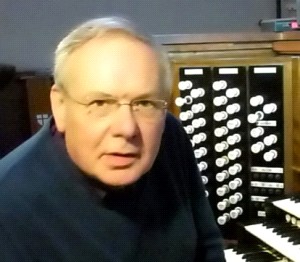Christ’s Chapel, Dulwich Village on Saturday 16 October at 2.30 pm
Members are invited to attend this lecture, demonstration and informal masterclass on a rich and rewarding area of organ repertoire, often overlooked by organists. The quality of the music allows it to be performed in recitals as well as within church services, but much of the material is technically very accessible, and of that most is for manuals only.
Even though there are two SSLSO meetings between now and 16 October, members are being offered these documents now, especially if they wish to play pieces in the masterclass section. Here are some samples for you to choose from and to prepare for the day if you wish. These scores were selected and compiled from Les Editions Outremontaises by Gloria Toplis. They are used with her permission and may be printed for use.
These pieces are offered in order to suggest and to help, but are not in any way mandatory. Participants are welcome to bring their own choices of music, provided they come within the remit of the session, i.e.were composed during the 17th or 18th centuries within the French organ tradition. Of course, we envisage that many members will prefer to listen rather than to play.
The following document includes names of some of the composers from this style period and representative works.
This stop-list may help to clarify the registrations given in the scores. More information will be given on this topic on the day.
Registering 17th and 18th Century French Organ Music:
It is essential to learn 17th and 18th century French terminology: Fonds= Foundation stops. This means flues, diapasons and principals up to 4′ where specified. Anches= reeds. Accouplements = couplers. Montres ( = show) = Principal pipes displayed at the front of the case. Grands Jeux = 8′ or 8′ and 4′ Reeds, Cornet* and 4′ Principal on the Great. On another manual for contrast, use 8′ quieter Reed eg Krummhorn or Clarinet, 4′ Principal ( provided it blends), Nazard and Tierce if available. These should be coupled together if possible. Pleins Jeux = Great Foundation stops up to and including the mixtures but not the reeds. If a 16′ foot flue is available, use one. Petit Plein Jeu means the same as Pleins Jeux on a secondary manual, eg the Choir. Sometimes the Great Chorus is called Grands Pleins Jeux to distinguish it from the Choir and manuals should be coupled. It is necessary to compromise when sounds on the organ you play do not match what is specified en français. Most of the time, such compromises are possible, even when mutations and reeds are not the same. In the 19th century, organists started to use Grand Choeur ( Full Organ ) which effectively combined the Grands Jeux and the Pleins Jeux, a combination which was not used in the classical era.
A word about Couplers: in French Music of all periods the following terminology is used: Tirasses = Pedal Couplers. eg Tirasse G = Grand Orgue ( Great ) coupled to Pedal. Intermanual couplers use the letters G, P and R as follows . Eg GR = couple Recit to Grande = Swell to Great, and GPR means couple all three manuals together.
Cornet* means a mixture stop of wide scale pipes at 8′,4′, 2 2/3′, 2′, 1 3/5. This stop produces a Trumpet like tone for the treble half of the manual compass only. If your organ does not have a cornet, use the mutations as specified.
Resources


